Yosemite National Park is one of the most beloved and iconic National Parks in the United States. It lies in the Sierra Nevada Mountains of eastern California and contains a vast range of habitats. While many people are familiar with stunning photographs of Yosemite, there is more to this park than meets the eye. This article explores 10 surprising Yosemite National Park facts.
1. Yosemite Is the Third-Oldest National Park

The Yosemite National Park Visitor Center features a life-sized sculpture of John Muir.
©Harmony Gerber/Shutterstock.com
Established on October 1, 1890, Yosemite National Park is the third-oldest National Park in the United States. The only two national parks older than Yosemite are Yellowstone and Sequoia, established in 1872 and 1890 respectively. What later became Yosemite National Park was first established as the Yosemite Grant by President Abraham Lincoln in 1864. John Muir, a Scottish-American naturalist, played a massive role in raising awareness about Yosemite and the importance of conserving it. In 1890, U.S. Congress passed the law creating Yosemite National Park. Then, when the National Park Service was created in 1916, Yosemite became a part of its jurisdiction.
2. Yosemite Is the Traditional Home of the Ahwahnechee People
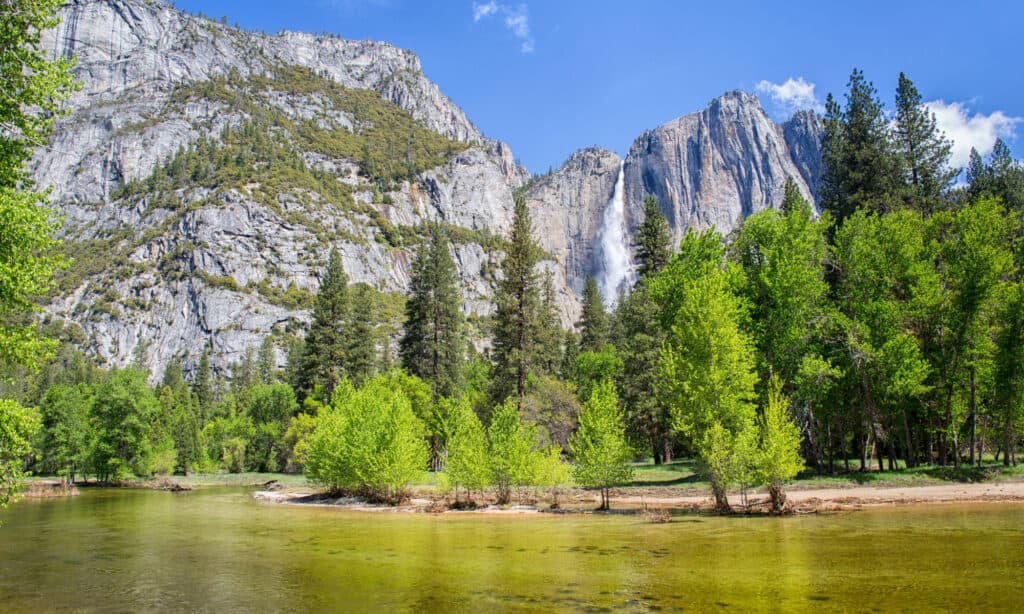
The Ahwahnechee word for Yosemite Valley is Ahwahne.
©McDow Photo Inc/Shutterstock.com
Thousands of years before the arrival of European settlers, Yosemite Valley supported the Ahwahnechee people. According to the National Park Service, humans have lived in Yosemite Valley for 8,000 years. The Ahwahnechee people foraged edible plants in the Yosemite Valley and hunted deer and other mammals. European settlers first arrived in Yosemite Valley during the Gold Rush of 1849. Conflicts quickly arose between indigenous people and settlers as the settlers took over indigenous land and resources. The conflict ultimately escalated into the Mariposa War of the 1850s.
3. Millions of People Visit Yosemite National Park Each Year
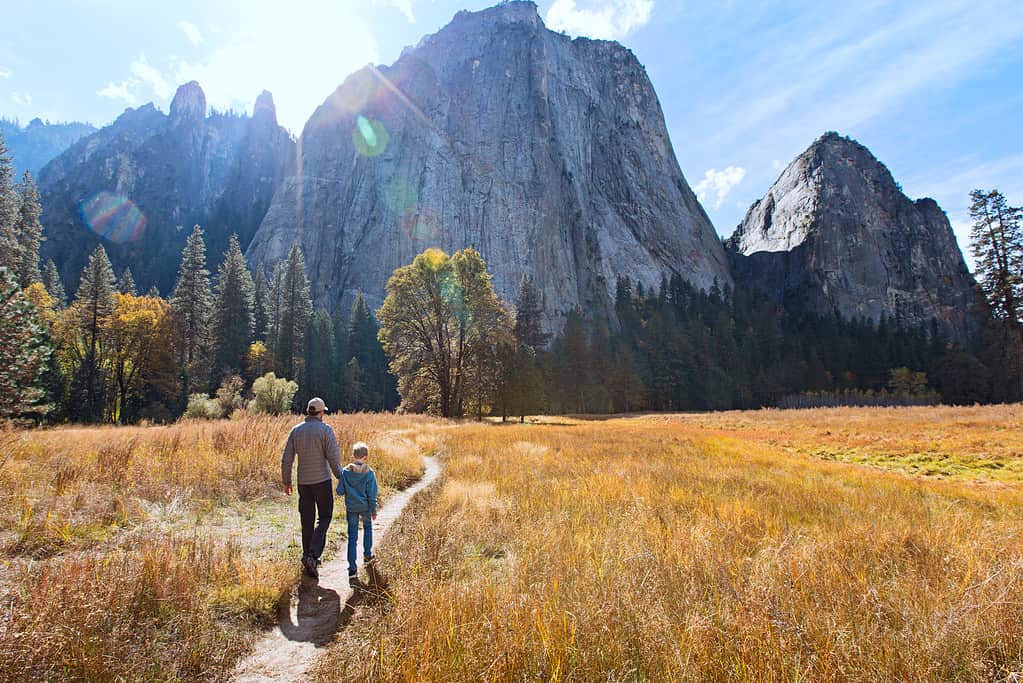
3.67 million people visited Yosemite National Park in 2022.
©noblige/ via Getty Images
Yosemite is one of the most popular national parks in the United States. Each year, millions of people visit the park. Yosemite Valley is the most popular area in Yosemite National Park, comprising only 5% of the park’s land but seeing over 90% of the park’s visitors.
4. Yosemite Valley Was Carved by Glaciers
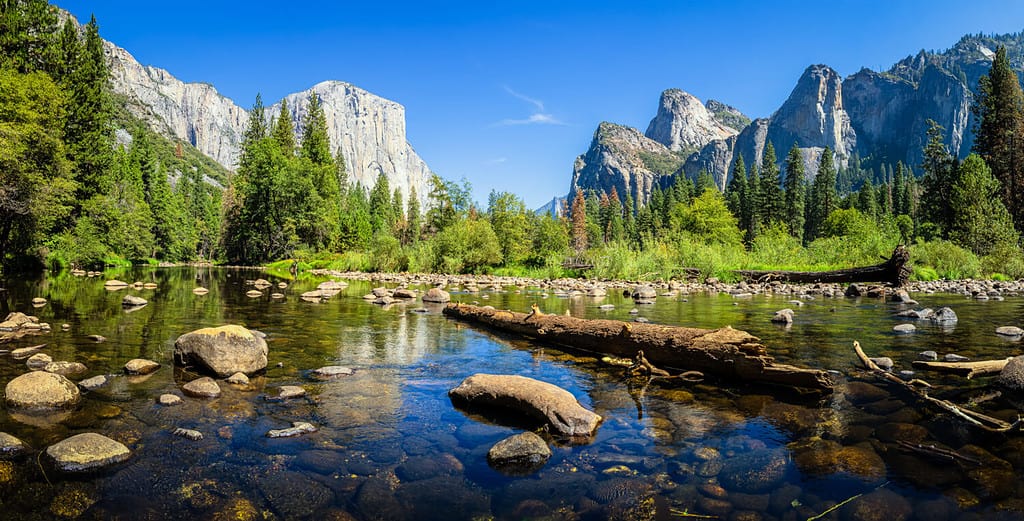
The iconic Yosemite Valley is a formation of the earth’s most recent ice age.
©Nyokki/Shutterstock.com
Yosemite is famous for its massive, granite rock formations such as El Capitan, Sentinel Dome, and Half Dome. These rock formations were all created by massive glaciers moving through the landscape during the most recent ice age. John Muir, the naturalist who played a massive role in Yosemite National Park’s formation, was one of the first people to suggest that Yosemite Valley was glacier-formed.
5. Yosemite Features the Largest Tree Species In the World
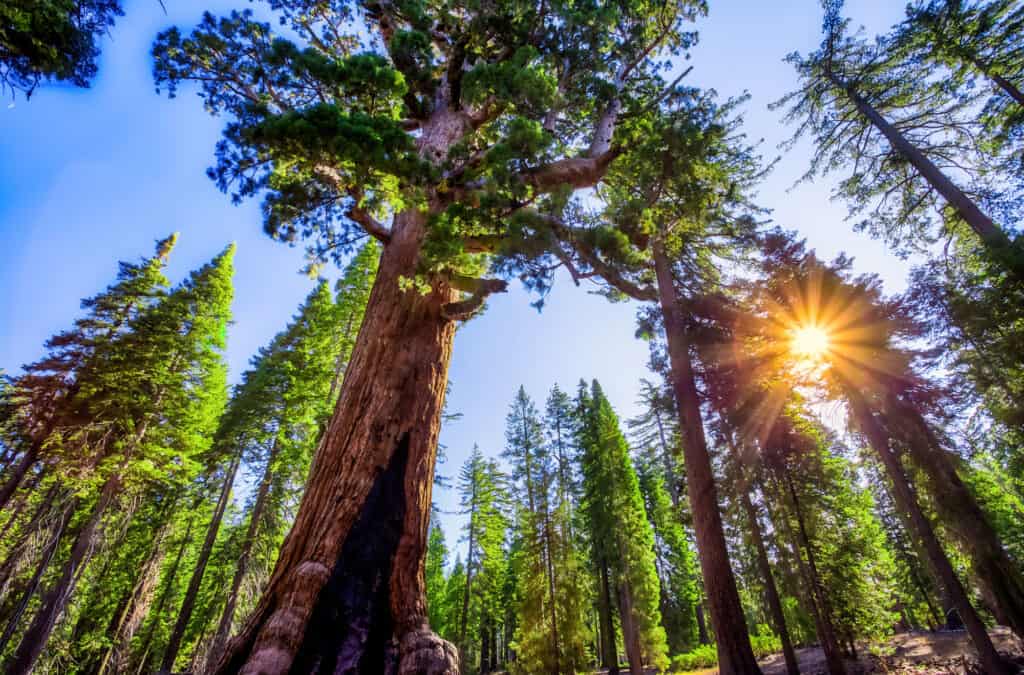
The Grizzly Giant is the second-largest tree in Yosemite National Park and is around 3000 years old.
©Stephen Moehle/Shutterstock.com
The giant sequoia (Sequoiadendron giganteum) is the largest species of tree in the world by volume. These incredible trees are found only in the Sierra Nevada range. Yosemite National Park has three groves of massive, ancient giant sequoia trees. The Grizzly Giant, the second-largest sequoia tree in Yosemite, is 209 feet tall and 25 feet in diameter.
6. It Has One of the Tallest Waterfalls In the United States
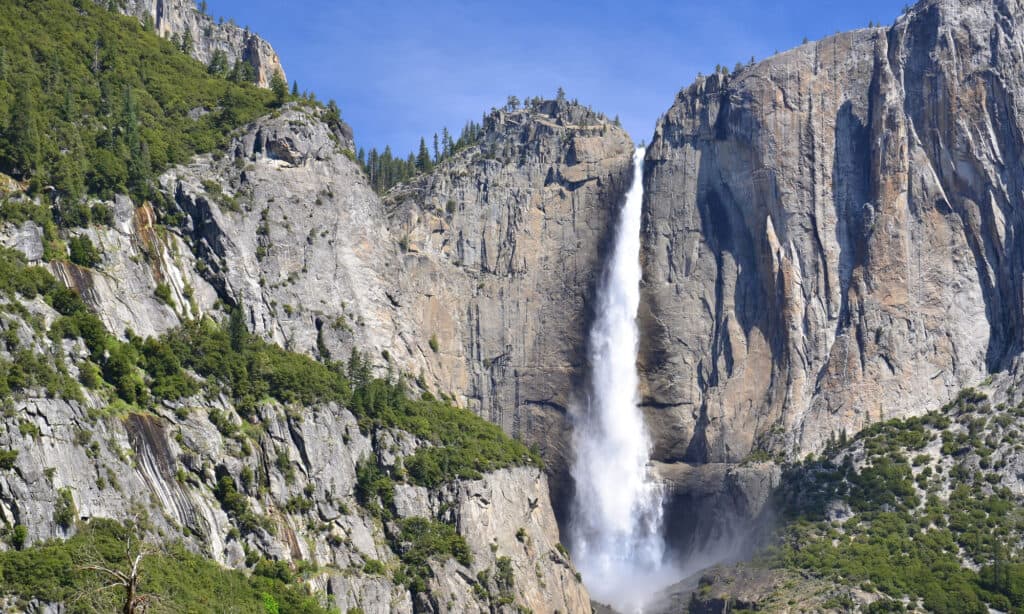
Yosemite Creek, the 15-mile-long creek featuring Yosemite Falls, feeds the Merced River.
©A.Hornung/Shutterstock.com
At 2,425 feet tall, Yosemite Falls is one of the tallest waterfalls in the United States. Due to its dramatic, glacier-carved landscape, Yosemite is also home to many more stunning waterfalls. These waterfalls are breathtaking any time they are flowing, but on certain rare occasions, they are especially beautiful. Some evenings, the sunset will backlight waterfalls, making them glow a bright, golden orange. Additionally, on clear nights, the moonlight will sometimes create rainbows on the falls.
7. Its Highest Point is 13,114 Feet Above Sea Level
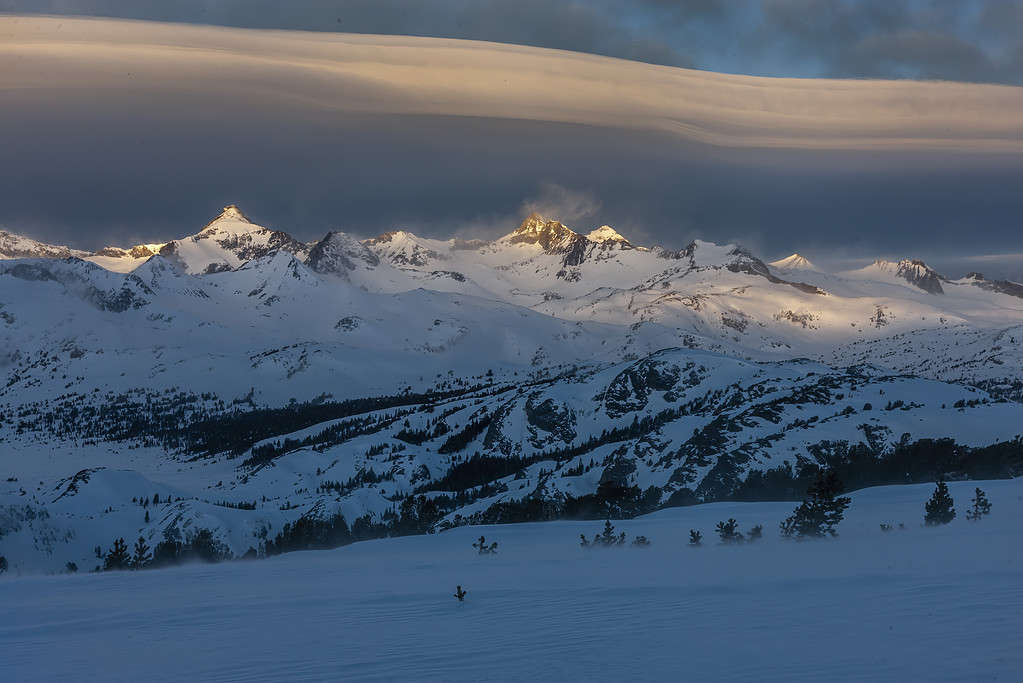
At 13,114 feet above sea level, Mount Lyell is the highest point in Yosemite National Park.
©Cavan Images/iStock via Getty Images
Mount Lyell once featured Yosemite’s largest glacier, Lyell Glacier. However, scientists now consider this former glacier an ice field due to its lack of movement.
8. Yosemite Has Three Endangered Animal Species
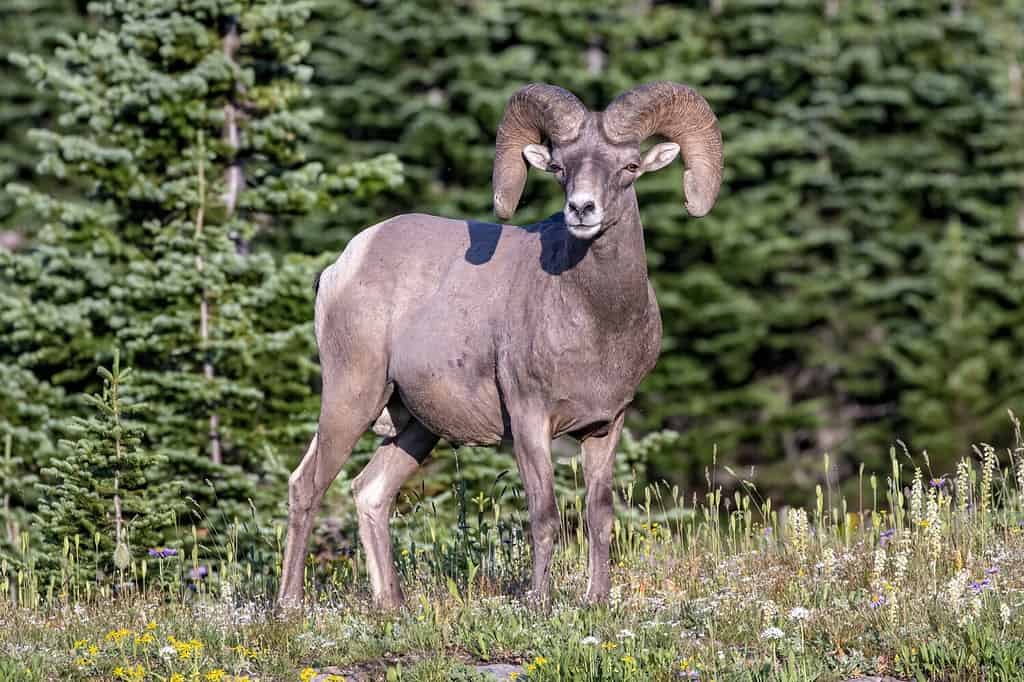
The Sierra Nevada bighorn sheep was listed as federally endangered in 2000.
©Wirestock Creators/Shutterstock.com
Yosemite National Park is home to several endangered and rare species including the Sierra Nevada bighorn sheep, fisher, and wolverine. In May of 2023, a wolverine was seen in Yosemite, which is only the second sighting of a wolverine in California in over 100 years. Once thought to be extinct in California, this recent sighting along with others is an exciting confirmation that they remain in the state.
9. Grizzly Bears Once Roamed the Park
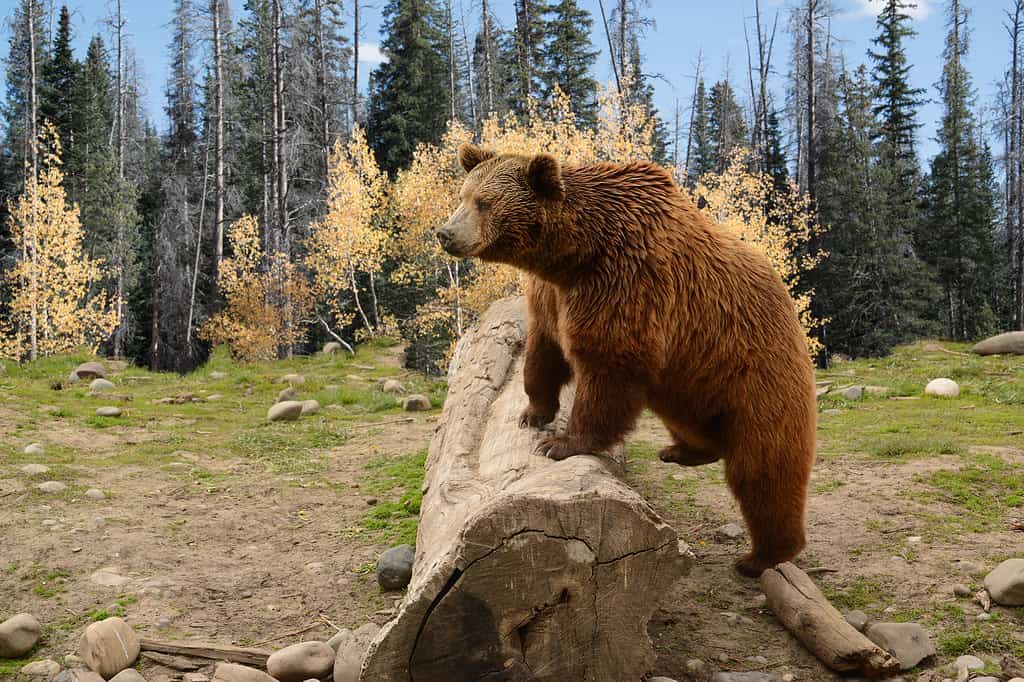
The last known
grizzly bear
in California was shot near Sequoia National Park in 1922.
©Georgia Evans/iStock / Getty Images Plus via Getty Images
There are around 300-500 American black bears in Yosemite National Park. However, the park was once also home to grizzly bears. Unfortunately, grizzly bears have been extirpated from California since 1922.
10. Yosemite Has a Rich History of Rock Climbing

Rock climbing in Yosemite traces its roots all the way back to John Muir.
©gregepperson/iStock via Getty Images
The massive, granite rock formations of Yosemite offer a unique opportunity to rock climbers. Yosemite has been the site of some historic rock-climbing ascents, from John Muir’s ascent of Cathedral Peak in 1869 to Alex Honnold’s first free solo ascent of El Capital in 2017.
11. Yosemite Had the First Woman National Park Ranger

Around 750 employees work at Yosemite each summer. In winter, the number drops to around 450.
©bennymarty/iStock via Getty Images
One of the lesser known, but historically important Yosemite National Park facts is that it was home to the first woman National Park Service ranger. In 1918, Clare Marie Hodges became the first female NPS ranger in the United States. When Yosemite had a shortage of rangers because of World War I, she applied and was accepted. She was previously a teacher at the Yosemite Valley School.
12. Yosemite’s Hetch Hetchy Dam Was Hugely Controversial

Despite strong opposition, the O’Shaughnessy Dam was completed in 1923.
©Sundry Photography/Shutterstock.com
Hetch Hetchy Reservoir, created by the O’Shaughnessy Dam in 1923, is the primary water source for San Francisco. However, its development was strongly opposed by many conservationists, including John Muir. Ultimately, President Woodrow Wilson and U.S. Congress approved the project, and the dam was created, flooding the Hetch Hetchy Valley.
The photo featured at the top of this post is © Nyokki/Shutterstock.com
Thank you for reading! Have some feedback for us? Contact the AZ Animals editorial team.







